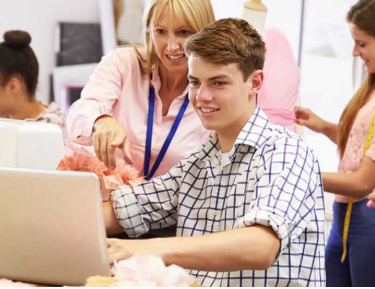In today’s classrooms, creativity is more than an artistic skill—it’s a way of thinking that drives problem-solving, innovation, and personal expression. Personalized learning naturally supports creativity by giving students the freedom to explore ideas, follow their interests, and choose how they demonstrate their understanding. In 2025, this learner-centered approach is helping educators nurture creative confidence across subjects and grade levels.
Connecting Creativity and Personalized Learning
Personalized learning adapts instruction to each student’s needs, preferences, and goals. It moves away from one-size-fits-all lessons and embraces flexible, student-driven experiences. When learners have a say in how they engage with content, they’re more likely to think deeply, ask questions, and explore original solutions—all key ingredients for creative growth.
Ways Personalized Learning Encourages Creativity
- Student Choice and Voice
Letting students choose topics, tools, or formats for assignments gives them the freedom to be expressive. Whether through art, storytelling, coding, or multimedia projects, personalized learning makes room for creative exploration. - Project-Based and Inquiry-Based Learning
These methods encourage students to ask questions, research topics of interest, and design creative solutions. Personalized learning supports these approaches by allowing students to pursue projects that matter to them. - Cross-Disciplinary Connections
Personalized learning often blends subjects to create more meaningful experiences. Students might explore science through writing, math through design, or history through performance. These integrations spark new ideas and creative thinking. - Flexible Pacing and Time for Exploration
Self-paced models give students time to go deeper into topics they enjoy. Without the pressure to move on quickly, learners can experiment, revise, and take creative risks. - Encouragement of Individual Interests
By honoring student passions—whether music, technology, nature, or storytelling—personalized learning promotes enthusiasm and innovation. It shows students that their ideas have value. - Reflective Practices
Creative growth often comes from reflection. Personalized learning environments include journaling, self-assessment, and goal setting, helping students build awareness of their creative process.
Role of Teachers in Fostering Creativity
Teachers guide creativity by:
- Designing open-ended tasks and challenges
- Encouraging divergent thinking and experimentation
- Celebrating originality and effort, not just outcomes
- Providing constructive feedback that helps refine ideas
Real-World Impact
Schools that embrace personalized learning report greater student engagement, more innovative projects, and stronger collaboration. Students who are encouraged to be creative become more confident in sharing their ideas and solving real-world problems.
Looking Ahead
In 2025 and beyond, creativity will remain an essential skill for success in education, careers, and life. Personalized learning creates the space for students to express themselves, think independently, and bring their unique ideas to life.
By supporting student agency, offering flexible learning paths, and celebrating diverse talents, personalized learning paves the way for a more imaginative and inspired generation of learners.














